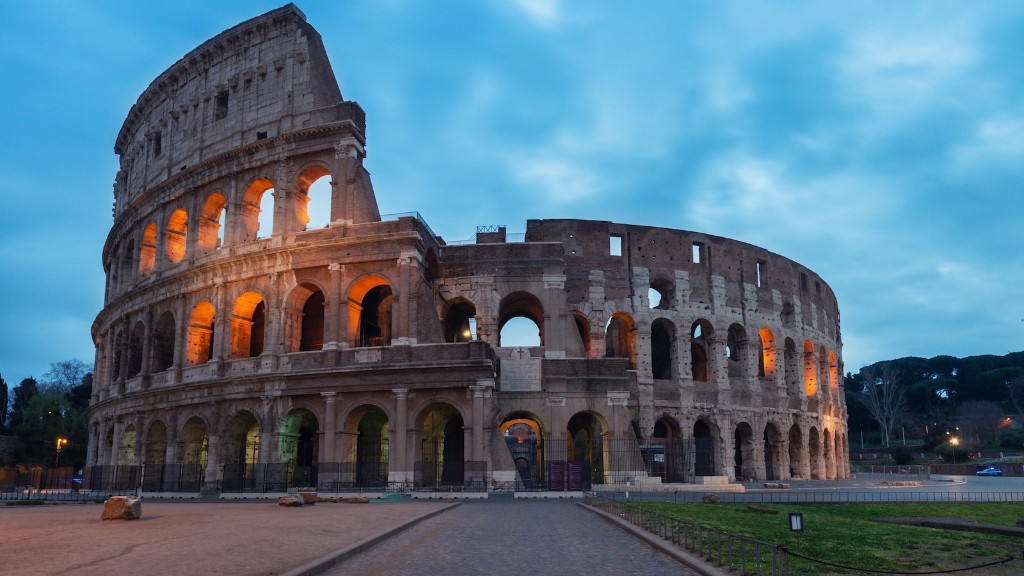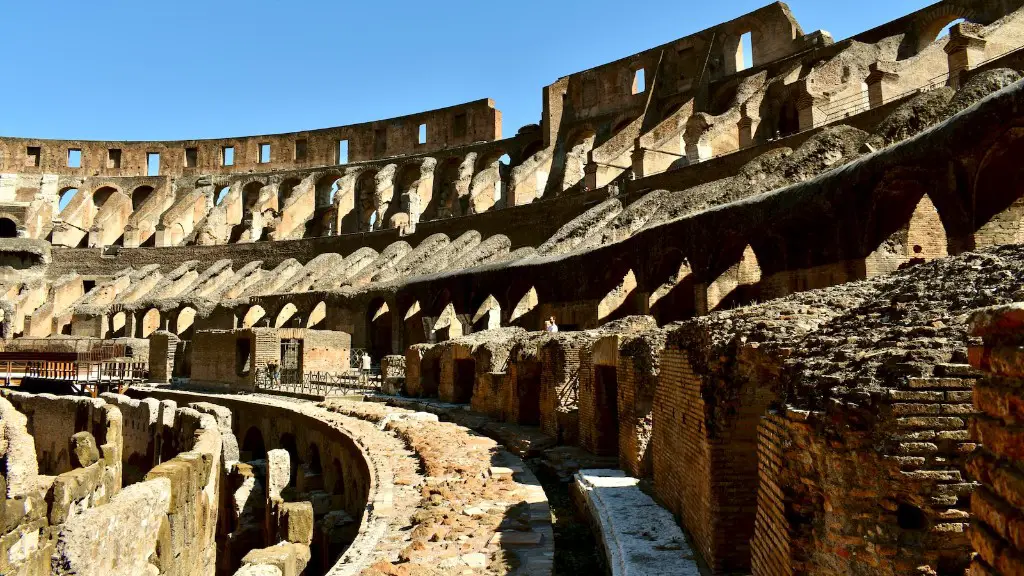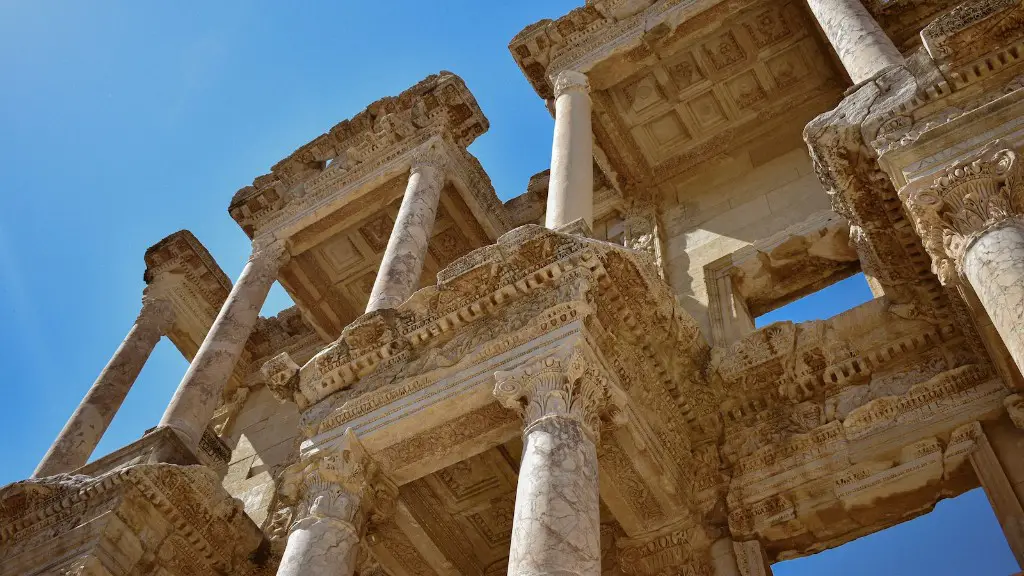The Gods of Ancient Rome
Ancient Rome was an intricate and complex pantheon, full of gods of varying power and importance. From major gods with their own cults and temples to lesser gods who were simply part of the local culture, they all had an impact on the day to day lives of those who lived within the Roman Empire. Through religion, rituals, and festivals, these gods and goddesses were worshipped and celebrated by the Romans for millennia. The main gods of Ancient Rome were Jupiter, Mars, Minerva, Apollo, Juno, Neptune, Ceres, Vesta, and Venus.
Jupiter
Jupiter was the most powerful god in the Roman pantheon, and often seen as the father figure of all other gods. He was believed to be the king of heaven and the ruler of the gods. His domain was laws and justice, and he was seen as the protector of Rome, responsible for its success and growth. He was acknowledged by many titles, such as Olympian, Maximus, and Saturnius, and his symbols included lightning bolts and eagles.
Mars
Mars was the god of war, the protector of Rome in battle, and the god of strength and health. His symbols were the spear, shield and armour, and he was often associated with the god of agriculture, Faunus. In some stories, Mars was the father of Romulus, the founder of Rome, which was said to be born from a union between the god and the priestess Rhea Silvia. He was also seen as the god of fertility and was worshipped in ceremonies related to this subject.
Minerva
Minerva was the goddess of wisdom, the arts, and strategy in battle. She was seen as the most important goddess in Ancient Rome, with her temple on Capitoline Hill, Rome’s most important and sacred hill. Her symbols included the olive tree, owl and spear, and she was also the goddess of weaving, spinning, and pottery. She was believed to have been born from the head of Jupiter, and was often seen as a protective deity to the people of Ancient Rome.
Apollo
Apollo was the god of light, music, and healing. But he was also a powerful god of prophecies and the protector of herds, crops and the people of Rome. His symbols included the laurel tree, the lyre, and the chariot, and he was often seen as a god of law and order who favored justice. He was popularly recognized for his prophetic gifts, and was believed to be the source of divine inspiration and guidance.
Juno
Juno was the goddess of marriage and the protector of women. Her symbols included the peacock, cow, and pomegranate, andshe was seen as a powerful goddess capable of bestowing favor or misfortune, depending on the actions of her worshipers. She was believed to be the wife of Jupiter, and the mother of Vulcan and Mars. She was seen to protect the unions of married couples, and her temples were often prominent in Rome.
Neptune
Neptune was the god of the sea, and patron of sailors. His symbols included horses and tridents, and he was seen as a powerful god that had control over storms and the potential to bring both good or bad luck in matters of the sea.he was seen to protect shipping and trade and was often credited with predicting the ebb and flow of the tides. He was often celebrated in Rome through festivals and rituals dedicated to him.
Ceres
Ceres was the goddess of agriculture and fertility, the provider of nourishment and abundance. Her symbols included the wheat, the ox, and the poppy seed, and she was seen as the Earth-mother goddess capable of bringing blessings of life-giving rain and fertility. She was popularly associated with the growth of plants and she was often celebrated in rituals of purification and fertility.
Vesta
Vesta was the Roman goddess of the hearth, home, and justice. She was seen as the goddess of the hearthfire and home, and the guardian of families. Her symbols included the fire and the eternal flame, and she was believed to preside over the sacred fire of the temple in Rome. Her presence was believed to ensure the safety and security of the Roman people and their homes.
Venus
Venus was the goddess of love and fertility, and the protector of Rome and its people. She was seen as the goddess of beauty and was often linked to glamour, seduction, and passion. Her symbols included the rose, the dove and the apple, and she was believed to bring wealth and abundance to Rome. She was featured in many works of art and literature, and was often celebrated through the context of love and marriage.
Religious Practices
The Ancient Romans worshipped their gods through rituals and ceremonies, often conducted in the presence of priests. The primary religious activities included sacred offerings, prayer, processions, and hymns, which were used to appeal for the favor of the gods. They also held elaborate religious festivals for each god, which often included sacrificial offerings and other rituals. Additionally, certain gods and goddesses would have dedicatory altars or temples created in their name, where they would receive frequent offerings and sacrifices.
Roman Mythology
Like all civilizations, the Ancient Romans saw their gods as more than abstract notions. Instead, they were very real creatures with an active role in the world. Stories, myths and legends were invented to explain the origins of gods and humans, and to give meaning to events and activities. These myths and stories were handed down for centuries, and provided Ancient Romans with a source of entertainment, education, and explanation.
The Immortalization of the Gods
The Ancient Romans believed that the gods had once been mortals, as human heroes, animals, or plants, and that they had changed into superior forms through their own efforts or through their own divine intervention. For this reason, they used the stories of their gods to encourage the Roman people to achieve greatness, as the gods had become immortalized in this way.
Accessibility to the Gods
In Ancient Rome, the gods were accessible to ordinary people and were thought to have a direct influence on every aspect of human life. People believed that the gods existed in different places at different times and could be called upon to help and protect anyone who paid tribute or homage to them. Through the offerings or sacrifices made to the gods, the Ancient Romans believed that the gods could provide assistance in life, even against the most challenging obstacles.
Conclusion
The gods of Ancient Rome were seen as integral part of the cultural and religious landscape, and had a presence in many aspects of life – from ceremonies, festivals, and rituals of worship, to stories, myths and legends. The Ancient Romans relied on the gods for protection and guidance, and believed that if they honored the gods, the gods would grant them favors and blessings. The main gods of Ancient Rome were Jupiter, Mars, Minerva, Apollo, Juno, Neptune, Ceres, Vesta, and Venus – the immortals that provided the Ancient Romans with safety and security.



